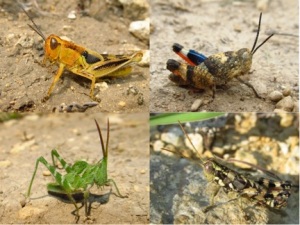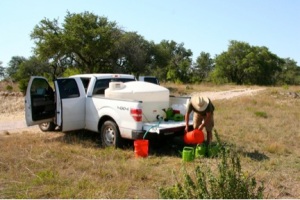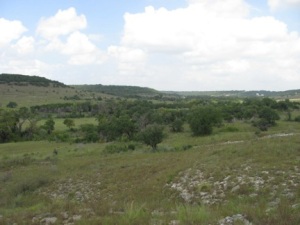Updated: 24/04/2025
Grasshoppers tend to increase in abundance during drought, no decree, or increase…Find out which and when in the Earl View Oikos paper “Water stress in grasslands: dynamic responses of plants and insect herbivores” by Paul A. Lenhart and co-workers. Below is their summary of the study:
When I first saw the climate projections from NOAA in 2011 that there would be a severe La Niña-fueled drought I was worried that my fieldwork season would be a bust. In 2011, Texas, as well as much of the south central United States of America, suffered through the worst seasonal drought since modern record keeping began in 1895. The drought had severe economic and ecological impacts across the region, but I was focused on my main study organism: grasshoppers. These insects are a very important component of grassland ecosystems, and for the past two years I, together with my co-supervisors (Micky Eubanks and Spencer Behmer), had worked in the grasslands and savannah of central Texas studying a vibrant grasshopper community, consisting of over 56 species. I was working to understand the diet breadth of some of the key species, including their macronutrient regulation behavior, while also quantifying competitive dynamics between these species.
Examples of grasshopper diversity. Clockwise from the top left: Melanoplus packardii, Hadrotettix trifasciatus, Acrolophitus hirtipes, Phaulotettix eurycercus.
Prior to 2011, one of our sampling seasons (2009) was slightly drier and we found a decrease in grasshopper density and abundance. This went against many previously published observations of grasshoppers and other insect herbivores having larger populations in drier years. The proposed mechanism in the literature is that plant nutrient content actually increases with water stress. However, studies that measure the effect of water stress on plant nutrients typically use greenhouse-reared plants or crop species, and generally measure plant quality as simply a function of nitrogen content. We now know that plant dietary quality is much more complex, and in particular that herbivores actively regulate their protein and carbohydrate intake. Therefore, we decided to change course from our originally planed competition experiment. Instead, we took advantage of the coming drought to conduct a manipulative study in order to gain insights into what happens to native plants, and herbivore behavior, when the rains do not come
We started our experiment early enough in the season to quantify, over time, the effect of water stress on the native grassland plant’s quality, quantity, and diversity. We marked off small open plots distributed across the grasslands of the Balcones Canyonlands National Wildlife Refuge. Half of these plants were left alone to suffer through the drought and we watered the other half [laboriously] by hand to mimic average summer rainfall. We did this through the growing season and took plant samples and visual grasshopper surveys monthly; in each plot individual grasshoppers were identified to species by sight. After completing each grasshopper survey, we measured grass and forb species richness, and took samples back to the lab to assess biomass and macronutrient content. Specifically, we quantified both digestible protein and nonstructural carbohydrate content in bulk samples of grass and forb tissues using biochemical assays.
At the end of the summer we found that drought reduced grasshopper abundance and diversity, relative to our water supplemented plots. Using our knowledge of different grasshopper species diets, we grouped species into functional feeding groups and found that functional groups responded differently to our watering treatments. Forb specialists seemed unaffected by the drought while grass-feeders and mixed-feeders (grass+forbs) were significantly less numerous in the unwatered plots. These different grasshopper responses were due to their particular feeding biology and the fact that grass and forbs responded differently to water stress. We go into more detail in the manuscript, but in short, forbs decreased in diversity and experienced a significant shift in their macronutrient profile over time, becoming less protein biased. In contrast, grass biomass was reduced by water stress, but grass protein-carbohydrate content was similar between our two water treatments.
Our results are significant because we used naturally-growing, drought acclimated plants, and quantified protein-carbohydrate content – which are the two most important nutrients that affect insect herbivore feeding behavior and performance. Our research provides valuable data on how plant macronutrient content, biomass, and diversity co-vary in the field, and such data can be used to parameterize models that can help us better understand how generalist herbivores forage and perform under drought conditions, which are predicted to become more common as climate change intensifies. Although more work is required, we envision the use of remote sensing technology, measuring plant quality, biomass, and diversity, to better manage insect pests in rangeland ecosystems.




